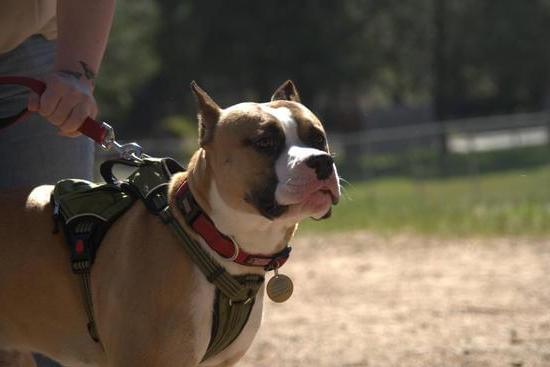Police dogs are an integral part of law enforcement, known for their exceptional sense of smell and the ability to assist officers in various operations. One important aspect of their role is drug detection, where they play a crucial role in identifying illegal substances.
But are police dogs trained to smell drugs? This article will delve into the history, training process, abilities, limitations, legal and ethical considerations, as well as the controversies and challenges faced by police dogs in drug detection operations.
Canine units have been utilized in law enforcement for decades, aiding officers in a wide range of tasks such as search and rescue missions, apprehension of suspects, and detecting contraband. Their acute sense of smell makes them invaluable assets in drug detection operations. The history of police dogs involved in drug detection can be traced back to the early 20th century when they were first used for this purpose. Over time, their training and effectiveness have evolved significantly.
The process of training police dogs to detect drugs is comprehensive and rigorous. It involves imprinting specific scents associated with different narcotics to ensure accuracy in identification. However, despite their remarkable abilities, there are limitations to what police dogs can accomplish in terms of smelling drugs. These limitations have sparked debates regarding the reliability of evidence obtained through canine units and raised legal and ethical considerations surrounding their use in drug detection operations.
The Role of Canine Units in Drug Detection Operations
Police dogs play a crucial role in drug detection operations due to their exceptional sense of smell and strong work ethic. These highly trained canines are an invaluable asset to law enforcement agencies when it comes to detecting illegal substances such as drugs. Their keen sense of smell allows them to detect even the smallest quantities of drugs that may be hidden or disguised.
The main role of canine units in drug detection operations is to assist law enforcement officers in identifying and locating illegal substances. Police dogs are trained to locate a wide range of narcotics, including cocaine, heroin, marijuana, methamphetamine, and MDMA. They can also detect prescription medications and other controlled substances. By working alongside their human counterparts, these specialized dogs help ensure the safety of communities by removing dangerous drugs from circulation.
One of the key questions often asked about police dogs is whether they are truly trained to smell drugs. The answer is yes – police dogs undergo extensive training to develop their olfactory abilities for detecting narcotics.
This training process involves exposing them to various scents and teaching them to differentiate between different odors, including those associated with drugs. It is this rigorous training that enables police dogs to effectively sniff out illicit substances in diverse environments such as vehicles, buildings, and open spaces.
History of Police Dogs in Drug Detection
Police dogs have been an integral part of law enforcement for many years, with their unique abilities being utilized in a variety of operations. One of the most well-known roles of police dogs is in drug detection, where their keen sense of smell is put to use in identifying various illegal substances.
The history of police dogs in drug detection dates back several decades, with the use of canines proving to be an effective tool in the fight against illicit drugs.
During the late 1960s, law enforcement agencies began to recognize the potential of utilizing police dogs in drug detection operations. This led to the establishment of specialized canine units dedicated to sniffing out narcotics and other controlled substances. With the rising concerns surrounding drug trafficking and abuse during that time, the need for a reliable and efficient method for detecting drugs became increasingly apparent.
The demand for police dogs trained to detect drugs resulted in comprehensive training programs being developed specifically for this purpose. These programs focused on harnessing the natural olfactory abilities of dogs and honing their skills through rigorous training exercises. Over time, advancements in training techniques and methodologies have further improved the effectiveness and reliability of police dogs in detecting drugs.
Training Process for Police Dogs to Detect Drugs
Police dogs are an integral part of law enforcement, and their role in drug detection is crucial to keeping communities safe. The training process for police dogs to detect drugs is a rigorous and intensive one. Here are the steps involved in the training process:
1. Basic Obedience Training: Before police dogs can begin their specialized training in drug detection, they undergo basic obedience training. This includes learning commands such as sit, stay, come, and heel.
2. Scent Detection Training: Once the basic obedience training is complete, police dogs start their specialized training in scent detection. They are exposed to various scents including drugs such as marijuana, cocaine, heroin, and methamphetamine.
3. Positive Reinforcement: During the scent detection training, police dogs are taught to associate the smell of drugs with a reward such as a toy or treats. This positive reinforcement helps them develop a strong motivation to detect drugs.
4. Practical Scenarios: To ensure that police dogs are prepared for real-life situations, they undergo practical scenarios where they have to locate hidden drugs in different environments such as buildings, vehicles, and open spaces.
The dedication and patience of handlers and trainers play a significant role in the successful training of police dogs to detect drugs. Through consistent practice and reinforcement, these highly-trained animals become invaluable assets in law enforcement efforts to combat drug trafficking and distribution.
Abilities and Limitations of Police Dogs in Smelling Drugs
Police dogs play a crucial role in law enforcement, particularly in drug detection operations. These highly trained canines are able to use their powerful sense of smell to detect drugs that may otherwise go unnoticed by human officers. But despite their impressive abilities, there are also limitations to what police dogs can accomplish when it comes to smelling drugs.
The training process for police dogs to detect drugs is rigorous and thorough. These canines are trained to recognize specific scents associated with various types of illegal substances, including marijuana, cocaine, heroin, and methamphetamine.
They are taught to alert their handlers when they detect the presence of these drugs, often by sitting or pawing at the location where the scent is strongest. This type of training allows police dogs to be an invaluable asset in locating hidden narcotics during search operations.
However, it’s important to note that while police dogs have an incredibly sensitive sense of smell and can detect even small amounts of drugs, they are not infallible. Factors such as environmental conditions, the presence of other strong odors, and the age or packaging of the drugs can all impact a dog’s ability to accurately identify narcotics. Additionally, there have been cases in which false alerts by police dogs have led to unwarranted searches and seizures.
| Abilities | Limitations |
|---|---|
| Highly sensitive sense of smell | Environmental conditions can affect accuracy |
| Trained to recognize specific drug scents | Presence of other strong odors |
| Able to locate hidden narcotics during search operations | False alerts leading to unwarranted searches and seizures |
In summary, police dogs are undoubtedly valuable assets in drug detection operations due to their exceptional olfactory capabilities and specialized training. However, it is essential for law enforcement agencies and officers to be aware of the limitations that come with relying solely on canine units for drug detection purposes. Striking a balance between utilizing these skilled animals effectively while also considering their constraints is crucial in ensuring the ethical and legal use of police dogs in drug detection operations.
Legal and Ethical Considerations in the Use of Police Dogs in Drug Detection
Police dogs have been an integral part of law enforcement for decades, especially in drug detection operations. However, the use of these canines raises certain legal and ethical considerations that need to be carefully addressed. From concerns about privacy rights to ensuring the welfare of the animals involved, there are various factors that come into play when using police dogs in drug detection.
Privacy Rights
One of the main legal considerations when using police dogs in drug detection is the issue of privacy rights. The use of these canines to sniff out drugs in public spaces or vehicles must be conducted within the boundaries of the law. In some cases, there have been challenges to the use of police dogs based on Fourth Amendment rights against unreasonable searches and seizures.
Welfare of Police Dogs
Another important ethical consideration is the welfare of the police dogs themselves. It is crucial to ensure that these canines are well-cared for and not subjected to unnecessary risks or harm during their training and deployment in drug detection operations. Proper training methods, regular health check-ups, and appropriate working conditions are essential in upholding the ethical treatment of these animals.
Training Standards and Certification
In order to address legal and ethical concerns regarding the use of police dogs in drug detection, it is vital for law enforcement agencies to adhere to strict training standards and certification processes for both handlers and canines. This includes ongoing education for handlers on best practices and updated legal regulations, as well as regular evaluations of the dogs’ abilities to ensure their reliability in detecting drugs without infringing on individuals’ rights.
These measures help maintain a balance between effective law enforcement practices and respecting legal and ethical boundaries related to the use of police dogs in drug detection.
Success Stories of Police Dogs in Drug Detection Operations
Police dogs have played a crucial role in law enforcement, especially in drug detection operations. These highly trained canines have contributed to the successful apprehension of drug traffickers and the confiscation of illegal substances, making them an invaluable asset to police departments around the world.
Notable Drug Detection Operations
There have been numerous instances where police dogs have made significant contributions to drug detection operations. In one such case, a police dog named K9 Max helped uncover a major drug trafficking ring by detecting large quantities of narcotics hidden in vehicles at a border checkpoint. Another success story involves K9 Luna, who successfully located a hidden stash of drugs during a raid on a suspected drug den, leading to multiple arrests and the seizure of illicit substances.
Assistance in Interagency Operations
Police dogs are not only instrumental in local law enforcement efforts but also play a vital role in interagency operations. Many police departments collaborate with federal agencies to combat drug trafficking, and their canine units are often called upon to assist in these operations. The keen sense of smell possessed by these dogs enables them to detect even small quantities of drugs concealed in various ways, thereby aiding in the interception of illicit substances at transportation hubs and border crossings.
Community Outreach and Education
In addition to their operational successes, police dogs involved in drug detection also contribute to community outreach and education initiatives. These K9 units often participate in public demonstrations and educational programs aimed at raising awareness about the dangers of drugs and showcasing the capabilities of these remarkable animals. By engaging with the community in this manner, police dogs help foster positive relationships between law enforcement agencies and the public while emphasizing the importance of combating drug-related crime.
These success stories serve as compelling evidence of the invaluable role that police dogs play in drug detection operations, demonstrating their effectiveness in contributing to the fight against narcotics trafficking and substance abuse.
Controversies and Challenges Faced by Police Dogs in Drug Detection Operations
Police dogs play a crucial role in law enforcement, particularly in drug detection operations. Thanks to their keen sense of smell, they are utilized by law enforcement agencies to locate illegal drugs. But the use of police dogs in drug detection operations is not without controversies and challenges.
One of the key controversies surrounding police dogs in drug detection is the issue of false alerts. There have been instances where police dogs have given false alerts for drugs, leading to wrongful searches and even arrests. This has raised concerns about the reliability of their detections and has sparked debates about the accuracy of their findings.
Additionally, there are challenges related to the training and certification process for police dogs in drug detection. It is important for these animals to undergo rigorous and specialized training to ensure that they can accurately detect different types of drugs. However, there have been cases where the training standards for police dogs have been called into question, leading to doubts about their abilities.
Moreover, there are ethical considerations surrounding the use of police dogs in drug detection operations. Critics argue that these animals may be subjected to unsafe conditions or excessive workloads, which can impact their well-being. There are ongoing discussions about ensuring that police dogs are treated humanely and ethically in the performance of their duties.
Conclusion
In conclusion, it is evident that police dogs play a crucial role in drug detection operations. Through their specialized training and keen sense of smell, these canines are instrumental in helping law enforcement agencies identify and apprehend individuals involved in drug-related activities. The history of police dogs in drug detection dates back several decades, and their success stories demonstrate the invaluable contribution they make to keeping our communities safe.
The training process for police dogs to detect drugs is rigorous and involves extensive conditioning and practice. This ensures that these canines are equipped with the necessary skills to accurately detect various types of narcotics.
While their abilities in smelling drugs are remarkable, it is important to recognize that there are limitations to what these animals can achieve. Factors such as weather conditions and environmental distractions may affect their performance, highlighting the need for ongoing support and resources for canine units.
Despite controversies and challenges faced by police dogs in drug detection operations, it cannot be denied that they are a vital asset to law enforcement agencies. It is essential for legal and ethical considerations to be upheld in the use of these animals, ensuring that their welfare and training standards are maintained at all times. Ultimately, the importance of police dogs in drug detection operations remains unparalleled, and their continued role in combating drug-related crimes is indispensable.
Frequently Asked Questions
What Do Police Dogs Do When They Find Drugs?
When police dogs find drugs, they are trained to sit or paw at the location of the scent to alert their handler. This indication then allows law enforcement to take appropriate action.
How Far Away Can Police Dogs Smell Drugs?
Police dogs have an incredible sense of smell and can detect drugs from a distance of up to 15 feet away. Their highly sensitive noses make them valuable assets in locating hidden substances.
How Are Police Scent Dogs Trained?
Police scent dogs are trained using positive reinforcement methods. They are exposed to various scents during training and learn to associate specific scents with rewards, such as treats or toys. The dogs undergo rigorous training to become proficient in detecting different odors accurately and reliably.

Welcome to the blog! I am a professional dog trainer and have been working with dogs for many years. In this blog, I will be discussing various topics related to dog training, including tips, tricks, and advice. I hope you find this information helpful and informative. Thanks for reading!





